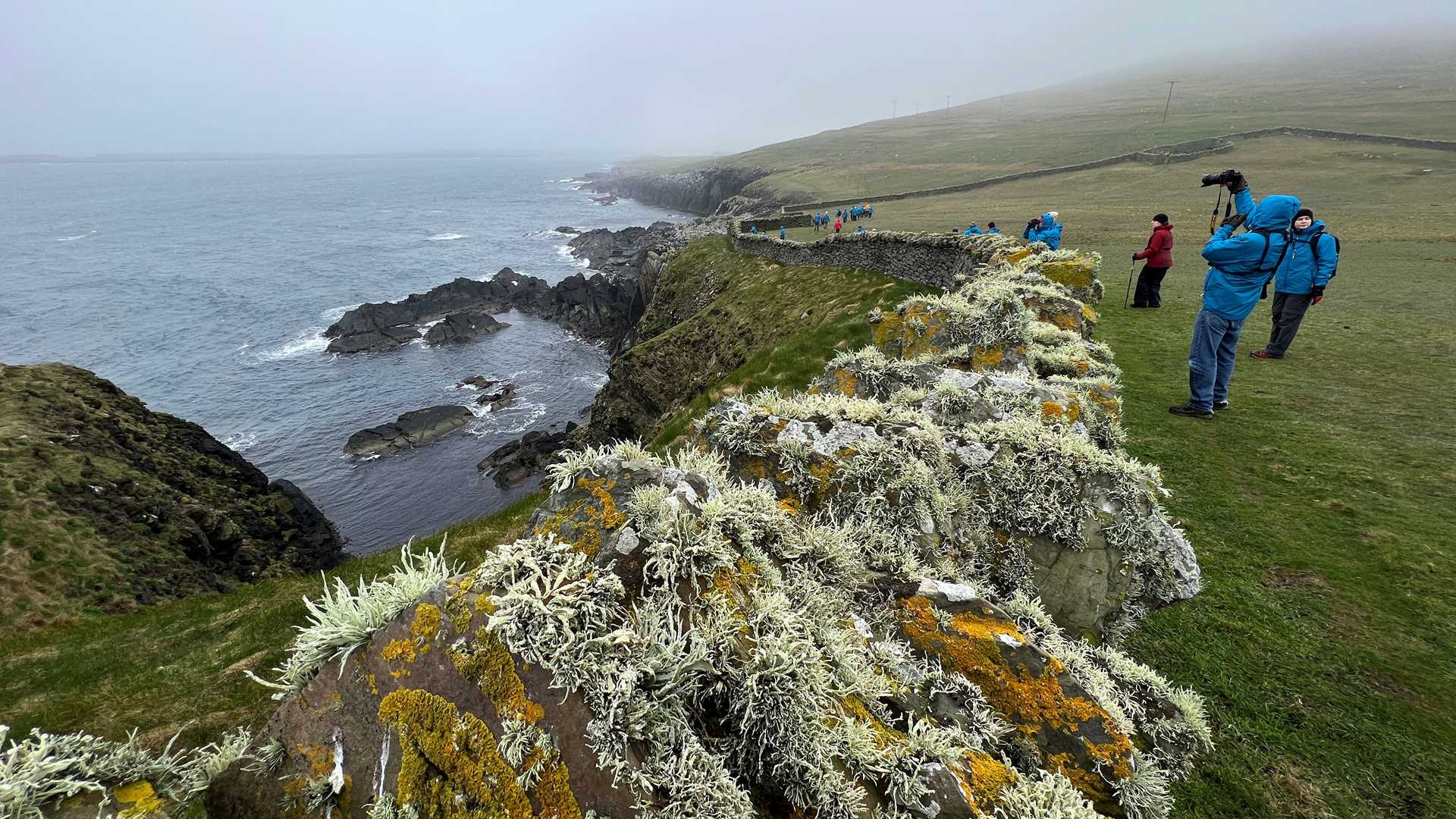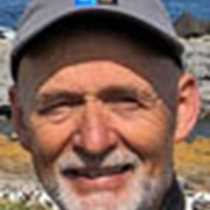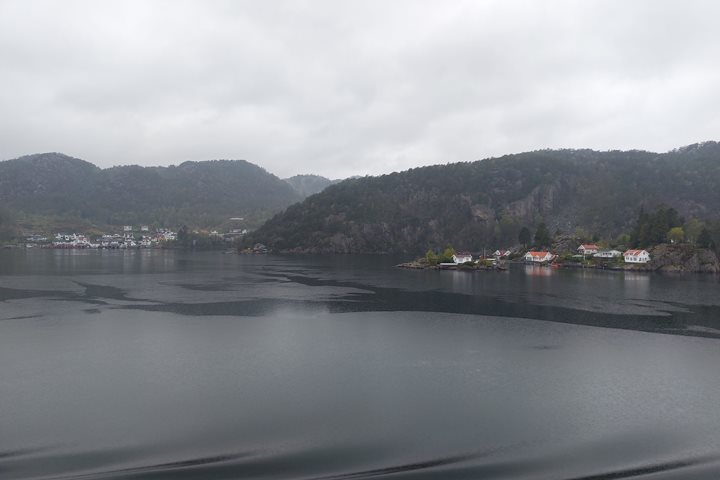We woke up to a foggy morning in Lerwick, Shetland’s only town with around 7500 inhabitants. It dates from the 17th century and became the capital of Shetland in the 1830s. The Norse inheritance, and the close relationship with Norway in particular, is obvious in a number of ways. Lerwick translates to Leirvik in Norwegian, meaning “bay of clay.” After breakfast, there were several guided sightseeing options, including the town itself and bus and walking tours outside town. Topics related to history, local culture, landscapes, and birds were all covered, and those who walked got a good leg stretch. The farthest tour went south to Jarlshof, “The Estate of the Earl.” This is one of Europe’s most important archeological sites. For more than 4000 years, people lived, worked, and built at Jarlshof, and we can see how their buildings changed over time. Remains of stone buildings dating from 2500 BC to the 1600s are spread out across the headland.
At noon, we all said goodbye to our great bus drivers and guides. Shortly after, we started sailing into the North Sea. In the afternoon, a couple lectures were offered. Our number one ornithologist Jim Wilson talked about bird migration and expanded on a number of mysteries connected to migrating birds. Mairi Fenton, naturalist in marine biology, gave a talk on the fisheries and protected marine areas of Scotland. We learned that establishing such protected areas is not an easy task, as fishermen and the fishing industry are concerned about the impact of new regulations. Fishing, fish farming, and related industries are core income sources in Shetland.
Evening recap covered a variety of topics, including footage of marine life from our undersea specialists, the history of Viking ships, expedition cruising, and geology. This was our last day in Scotland, and we are anxious to make our next landfall on the coast of Norway, the origin of so many Scots.






